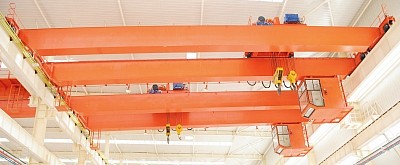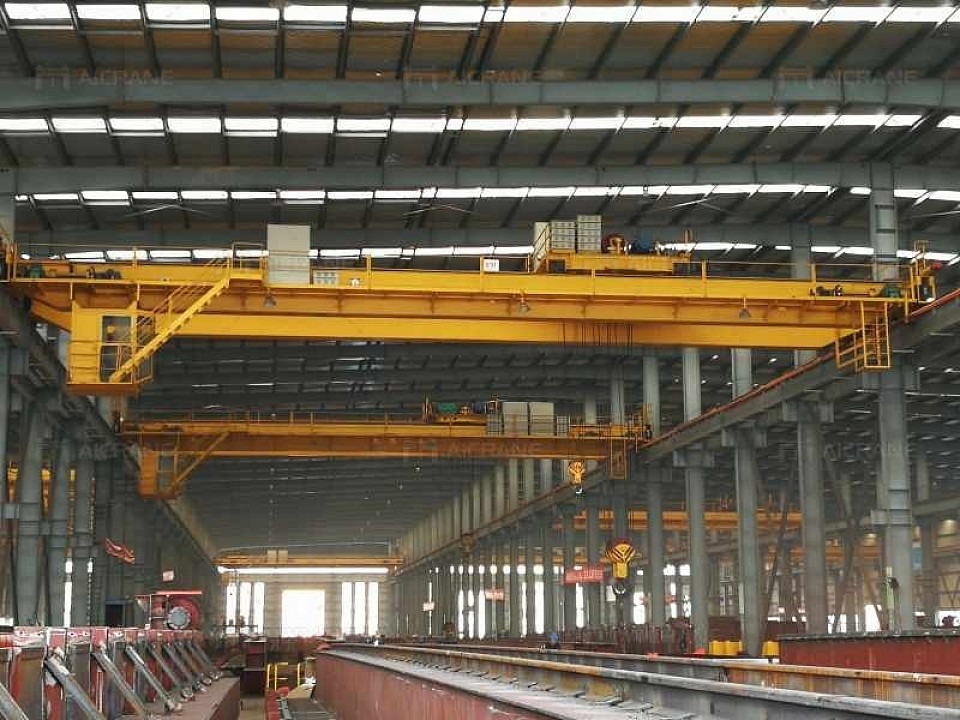Maintenance Best Practices for a 40 Ton Bridge Crane
Maintenance Information
A 40 ton bridge crane is a substantial investment, playing a pivotal role in heavy lifting operations across various industries, including manufacturing, construction, and logistics. Proper maintenance is crucial to ensure the crane's longevity, safety, and optimal performance. This article explores essential maintenance practices that every crane operator and facility manager should follow.
1. Understanding the Importance of Regular Maintenance
Maintenance of a 40 ton bridge crane is not just about compliance with regulations but also about ensuring operational efficiency and safety. Neglecting maintenance can lead to equipment breakdowns, costly repairs, and accidents that jeopardize worker safety.
Benefits of Regular Maintenance:
Enhanced Safety: Regular checks help identify potential hazards before they cause accidents.
Increased Equipment Lifespan: Proactive care prevents premature wear and tear.
Cost Savings: Preventive maintenance reduces the likelihood of expensive emergency repairs.
Improved Performance: A well-maintained crane operates smoothly and efficiently.
2. Daily Inspections: The First Line of Defense
Daily inspections are the cornerstone of effective maintenance. Operators should perform a visual and functional check at the start of each shift. These inspections typically include:
Hooks and Chains: Check for cracks, deformation, or wear.
Wire Ropes: Look for fraying, kinks, or corrosion.
Brakes: Ensure they engage and release smoothly.
Controls and Signals: Test all operational controls and emergency stop mechanisms.
Lubrication: Verify that all moving parts are adequately lubricated to reduce friction and wear.
Documenting these inspections ensures accountability and provides a record for tracking recurring issues.
3. Scheduled Preventive Maintenance
Preventive maintenance involves systematic checks and servicing at predetermined intervals. It’s more comprehensive than daily inspections and is often guided by the manufacturer’s recommendations.
Key Components to Inspect:
Structural Integrity: Inspect the crane’s girders and frame for cracks, rust, or other damage.
Electrical Systems: Check wiring, connections, and circuit breakers for signs of wear or overheating.
Mechanical Systems: Inspect gearboxes, couplings, and bearings for smooth operation and wear.
Load Testing: Periodically test the crane’s lifting capacity to ensure it meets rated load requirements.
Using certified technicians for scheduled maintenance can ensure a thorough and accurate evaluation of the crane’s condition.
4. Proper Lubrication Practices
Lubrication is vital for the crane’s moving parts to function efficiently and avoid excessive wear. Different components require specific types of lubricants, as recommended by the manufacturer. Over-lubrication and under-lubrication can both cause issues, so maintaining the correct balance is key.
Tips for Effective Lubrication:
Use only manufacturer-approved lubricants.
Clean components before applying new lubricant to avoid contamination.
Establish a lubrication schedule and stick to it.
5. Operator Training and Awareness
Even the best-maintained equipment can fail if operated improperly. Proper training ensures that operators understand the equipment’s capabilities and limitations, as well as the significance of maintenance protocols.
Essential Training Topics:
Recognizing early warning signs of malfunction.
Proper usage of double girder eot crane controls and load-lifting techniques.
Emergency procedures in case of equipment failure.
6. Keeping Detailed Maintenance Records
A comprehensive maintenance log is invaluable for tracking the crane’s condition and planning future upkeep. These records should include:
Dates and details of inspections and repairs.
Parts replaced and their specifications.
Load test results and certifications.
Having a detailed history helps identify patterns of wear and facilitates proactive maintenance planning.
7. Addressing Repairs Promptly
When issues are identified during inspections or maintenance, addressing them immediately prevents minor problems from escalating into major failures. Common repairs include:
Replacing worn-out wire ropes, chains, or hooks.
Aligning misaligned rails or tracks.
Servicing or replacing malfunctioning motors or brakes.
Using high-quality, OEM-approved parts ensures reliability and compatibility.
8. Compliance with Regulatory Standards
Bridge cranes are subject to strict safety regulations and standards. Regular maintenance ensures compliance with industry standards like those set by OSHA or ISO. Non-compliance can result in hefty fines and increased liability.
Periodic Compliance Checks:
Ensure that load rating and safety labels are visible and legible.
Verify that safety features like limit switches and emergency stops are functional.
Conduct third-party inspections and certifications as required.
9. Leveraging Modern Technology
Modern 40 ton bridge cranes often come equipped with advanced diagnostics and monitoring systems. These tools can:
Track usage and identify patterns of wear.
Alert operators to potential failures before they occur.
Streamline the scheduling of maintenance tasks.
Investing in these technologies can significantly enhance maintenance efficiency and accuracy.
10. Partnering with Professional Service Providers
For comprehensive maintenance and repairs, partnering with a trusted service provider is often the best approach. Professional technicians bring expertise and access to specialized tools, ensuring that the crane remains in top condition.
Conclusion
Maintaining a 40 ton bridge crane is a continuous process that requires attention to detail, adherence to schedules, and a commitment to safety. By implementing these best practices, businesses can maximize their crane’s performance, extend its lifespan, and ensure a safe working environment. Proper maintenance is not just an operational necessity but also a wise investment in the long-term efficiency and reliability of your equipment.


